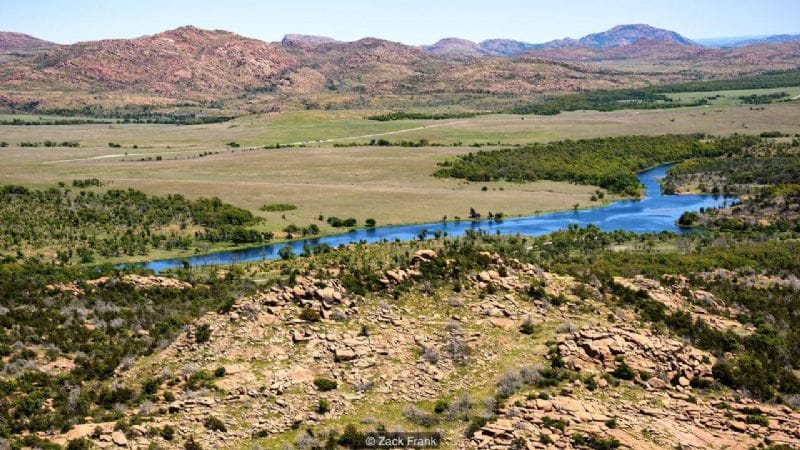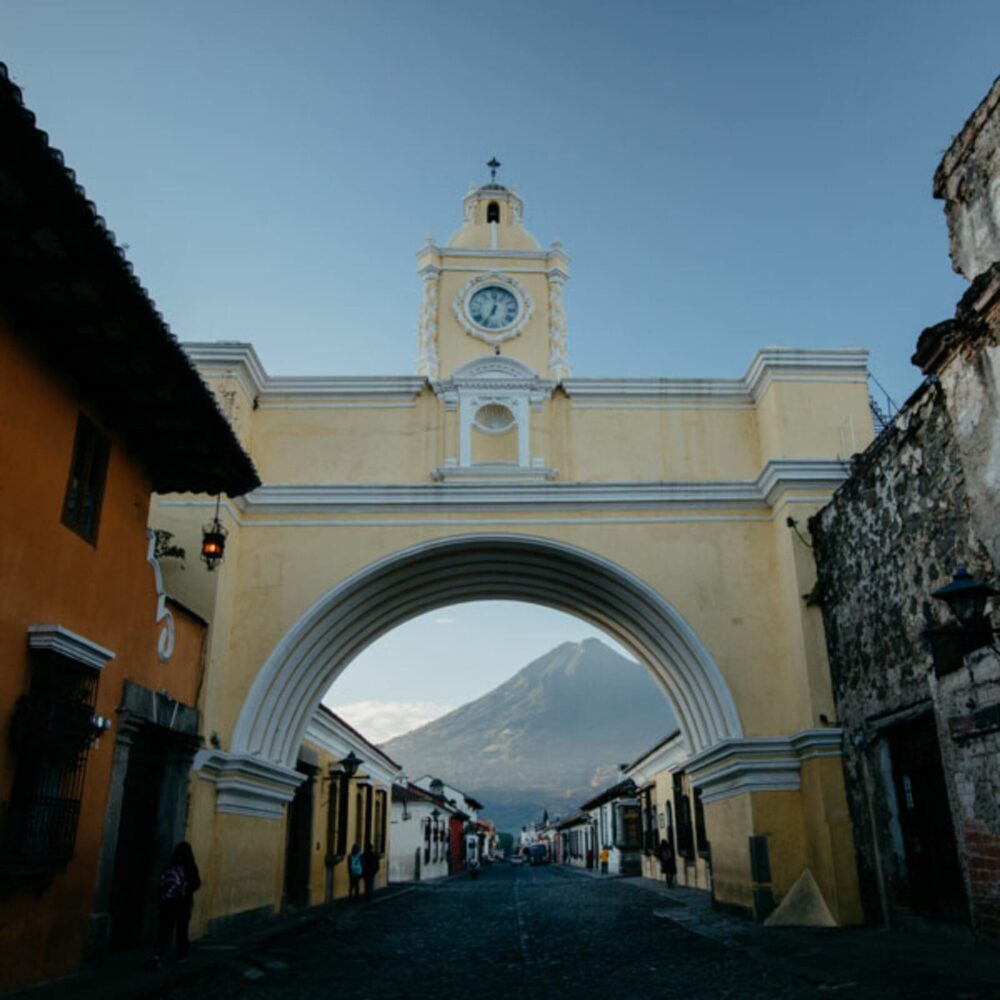Folks don’t usually think of mountains when they think of Oklahoma, but most of us Okies know better!
A Tribute to my Dad
For as long as I can remember, our yearly schedule was punctuated with hiking trips to “the Wichitas” of southwest Oklahoma. Besides taking my brother and I on countless adventures (occasionally “skipping” school), my father has himself summited 35 different peaks in the Wichita Mountains since the 1970’s, and even had a hand in naming one or two of them.
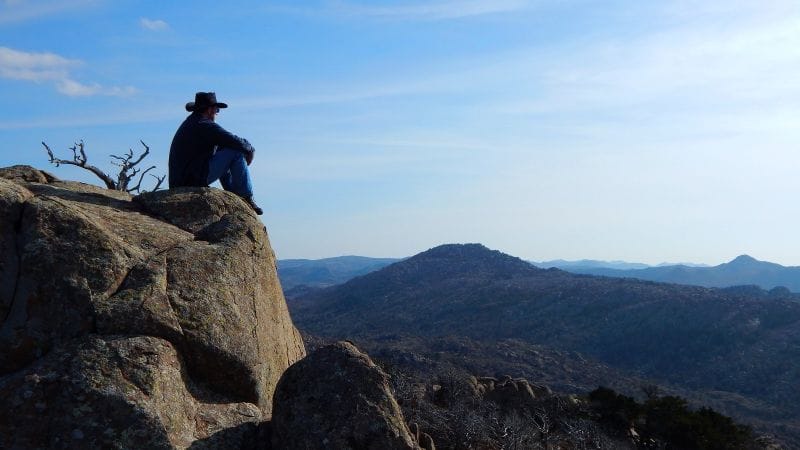 My dad on the summit of Gordon Peak, which is now named after his late father (my grandfather).
My dad on the summit of Gordon Peak, which is now named after his late father (my grandfather).
Beyond the Prairie
Flat farmland and rolling prairies are what we are known for, but few states also have mountains and overgrown rockpiles with names like the Arbuckles, the Ozarks, the Ouachitas, the Kiamichis and of course, the Wichitas.
You will also find the Quartz Mountains, the Navajo Mountains, the Gloss Mountains, the Boston Mountains, the Sans Bois Mountains, and the Winding Stair Mountains, along with Buffalo Mountain, Cavanal Hill, and Sugarloaf Peak.
And I’ve yet to mention Black Mesa (the highest point in the state, on the New Mexico border), the Antelope Hills (and its nomadic pronghorn), the Osage Hills (and buffalo preserve), and the Cookson Hills (and its elk herd).
Just take a glance at the topographic heat map below. There are major ranges of hills, mountains, mesas, river valleys, etc, in literally every corner of the state.
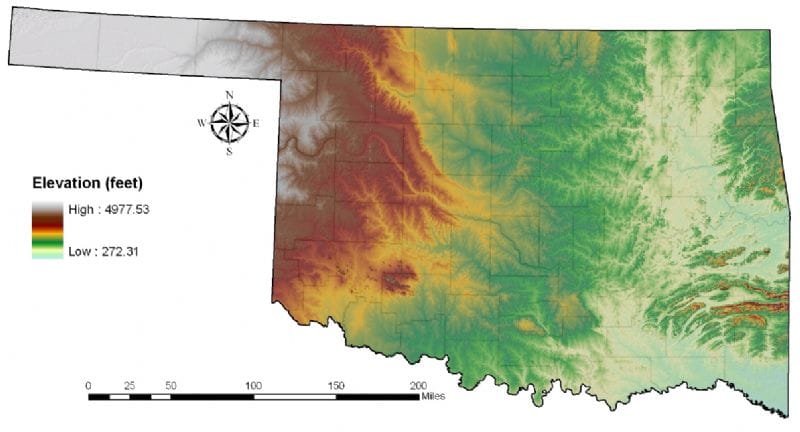
But the Wichita Mountains (the brown “circle” in the lower left of the map), although not the largest or the tallest in Oklahoma, are still tops in the state. Not only are they the most well-known, but are also easiest to get to from most of our largest cities.
A Hidden Treasure
In 2017, Zack Frank from the BBC visited the Wichitas and wrote a pretty cool description of our favorite mountains:
Amazingly, these rugged mountains, more closely resembling some landscapes in Sub-Saharan Africa than anywhere in the western hemisphere, are unknown to most Americans.
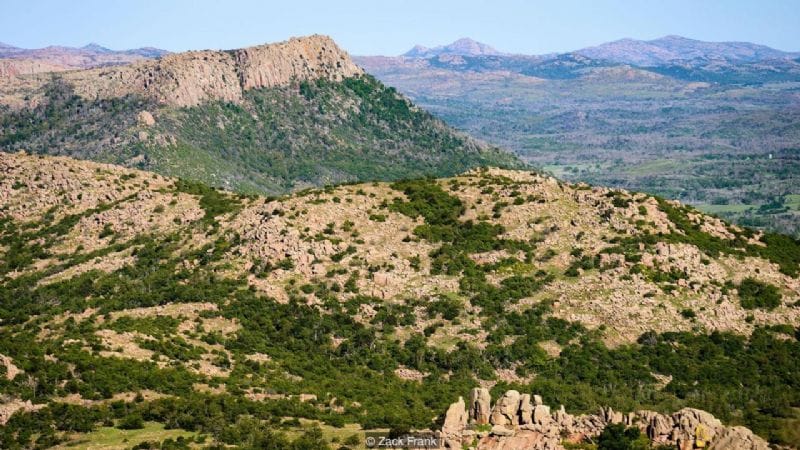
After reading the BBC article, I got to thinking more about the mountains that I love so much, and I decided to search for any article I could find that might give a creation scientist’s explanation of the geology of the area. (Unfortunately, the Visitor’s Center at the Wichita Mountains National Wildlife Refuge only provides the secular humanist interpretation of the “creation” of these mountains.)
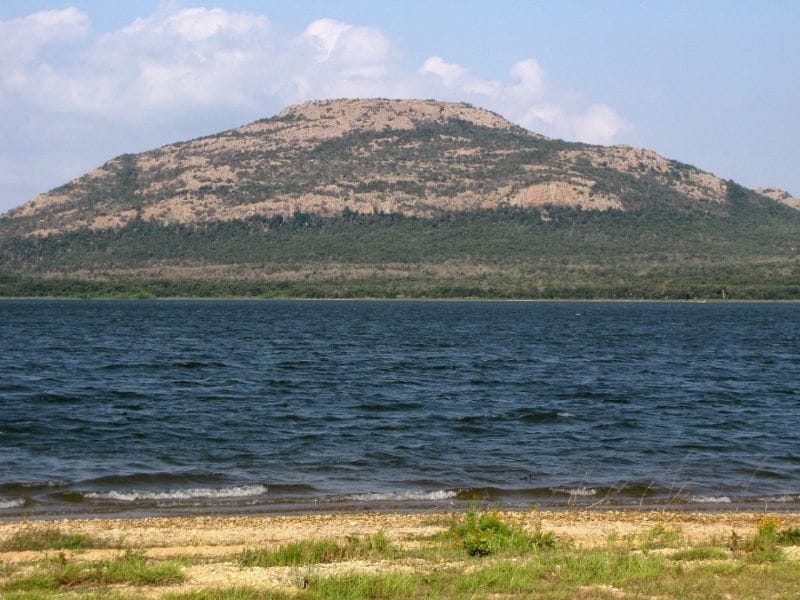
Thousands of Years, not Billions
Well, I struck gold and found exactly what I had hoped existed. In 2016, geologist Sara Mikkelson of The Creation Club wrote an article entitled “Oklahoma’s Wichita Mountains“, where she gives a helpful summary of the geological processes that likley helped to form what we now know as the Wichitas.
Here is are some of the key points from her article, interspersed with a few of my father’s best pictures from his years exploring the Wichitas:
The main type of rock found in [the] Wichita Mountains is granite. Granite is a very beautiful type of rock made by magma..squeezing up into pre-existing rock. It then hardens and crystallizes, separating into three different minerals that you can see in the speckled patterns of granite. The granite of [the Wichitas] looks like it’s had a pretty rough life, battered and worn, as if to say, “you have no idea what I’ve been through”. Truly, the catastrophe these mountains have been through is unlike anything we see today. This rock probably went through the entire global flood, mentioned in the Bible.
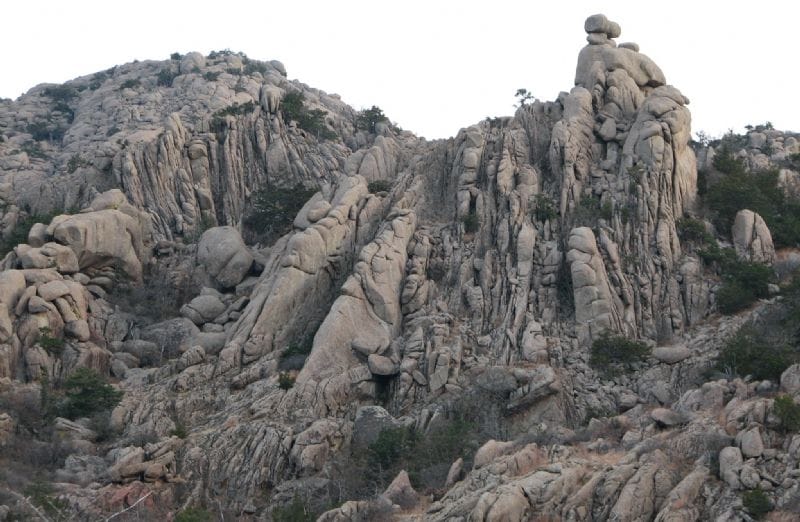
[It seems] likely that this granite started forming at the very beginning of the flood, when the “fountains of the great deep” began to break up. This would have caused volcanoes, earthquakes, magma pushing up into layers, and more. The continents also would have started to break apart at this time…Other types of rock made by underground magma and above ground lava were formed in the area around the same time.

This granite was formed by magma squeezing into the Tillman rock group. It was covered by flood waters and mud layers. Still in the early phases of the flood (classified as “Carboniferous”), [the Wichitas] began to rise as sections of earth’s surface were squeezed, pulled apart, and pushed up. Progressing farther into the flood (Permian rock sections), these mountains were worn down quite a bit by the flood waters, and covered with more mud and gravel. Later, that mud and gravel was cleared away, revealing [the] Wichita Mountains…a beautiful monument of the world-wide flood and the awe-inspiring power of God.
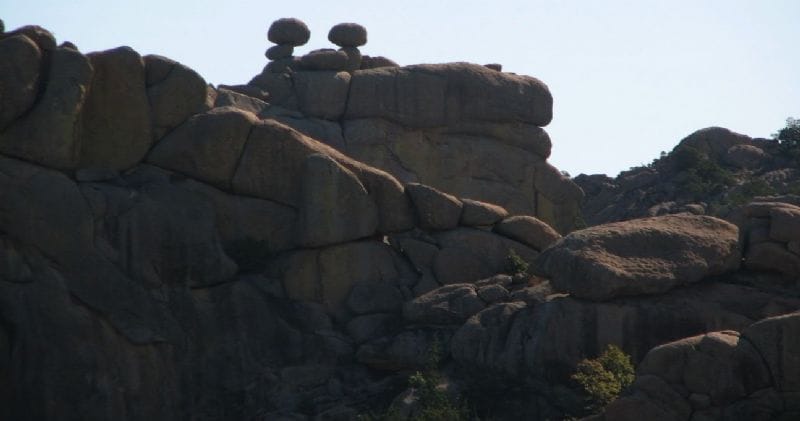
In all my years of rock-climbing, boulder-hopping and cave-exploring in the Wichitas, I have never heard anyone attempt to give a creationist explanation of their formation. Sara’s words have given me even more reasons to thank God for the ruggedly beautiful Wichita Mountains, which were formed by His hand, for His glory, and for our joy.
